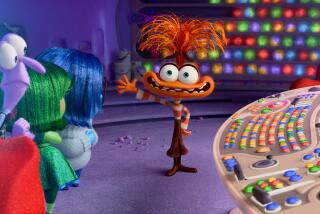Are Movie Theaters the Real Dinosaurs?
- Share via
In the all-digital future of Michael A. Hiltzik’s “Hollywood 2010” (Nov. 7), filmmakers “would have to give up much of the vocabulary of filmmaking.” I protest. The raw material of movie-making--character, story, acting, pacing, blocking, camera, lighting, editing, music--all remain the same. Only the tools change. It is in the dark cinemas that 100 years of moviegoing will be discarded.
At $100,000-plus per screen, only major markets will convert to digital projection. Ticket and concession prices will rise; moviegoers with fewer entertainment dollars will be priced out of theatrical exhibition; first-run attendance will drop. Studios will defer digital-to-print transfer for the remaining conventional cinemas until after the “Sunday night final cut” dictated by opening-night response. Films that fail to find their audience in digital run will go directly to DVD without a film release. Small-town and art-house cinemas will be forced to convert to low-budget digital (the oversize Sony in your front room) when film prints are unavailable. Poor equipment and high prices will degrade the cinema experience. The audience will wait for video; cinemas will close. The “greater reach” promised by Bran Ferren will be played off the Internet on a wide-screen computer, and I will have to be in a major market to share a laugh or a cry with a hundred people I haven’t met.
In our zeal to embrace the future (or at least to not “identify yourself as a dinosaur”), let’s not forget to apply the test: Who will benefit?
Tom Connole
Hollywood
More to Read
The biggest entertainment stories
Get our big stories about Hollywood, film, television, music, arts, culture and more right in your inbox as soon as they publish.
You may occasionally receive promotional content from the Los Angeles Times.










